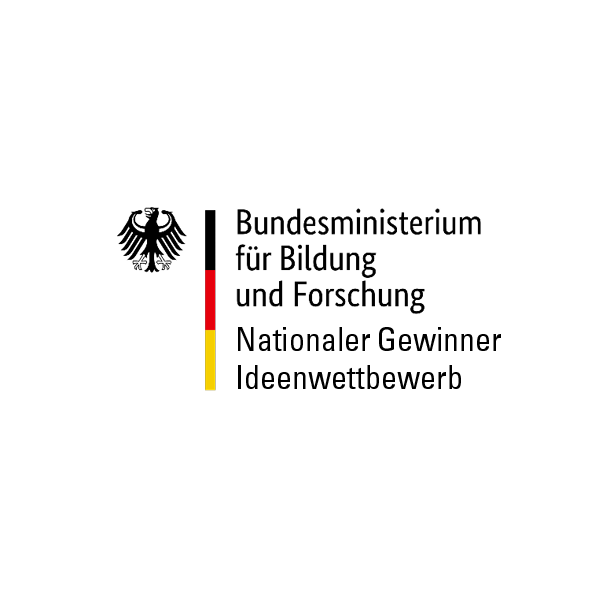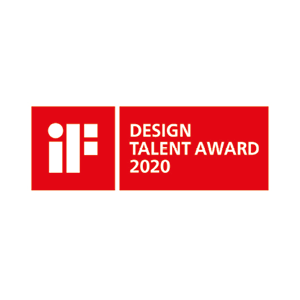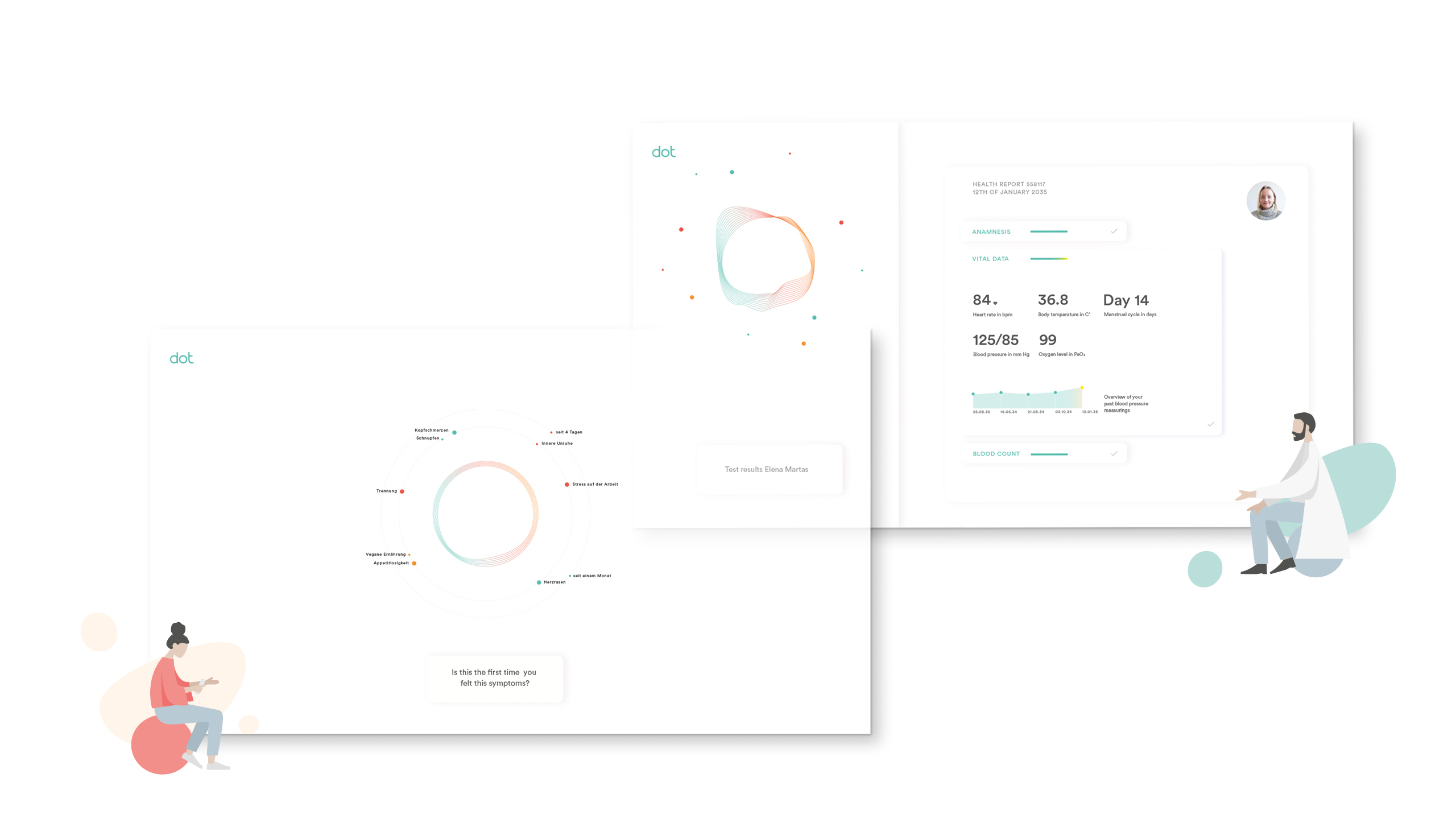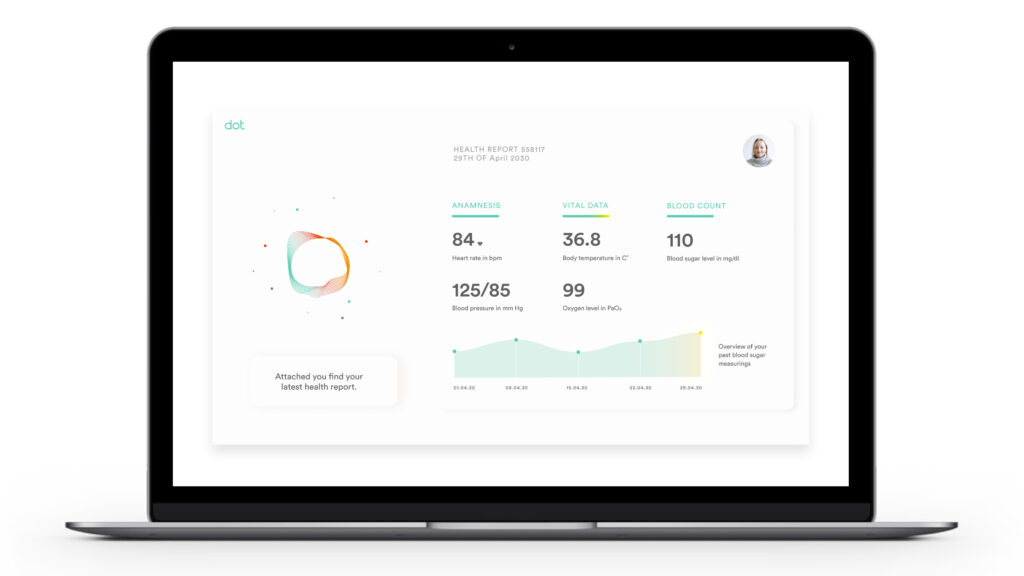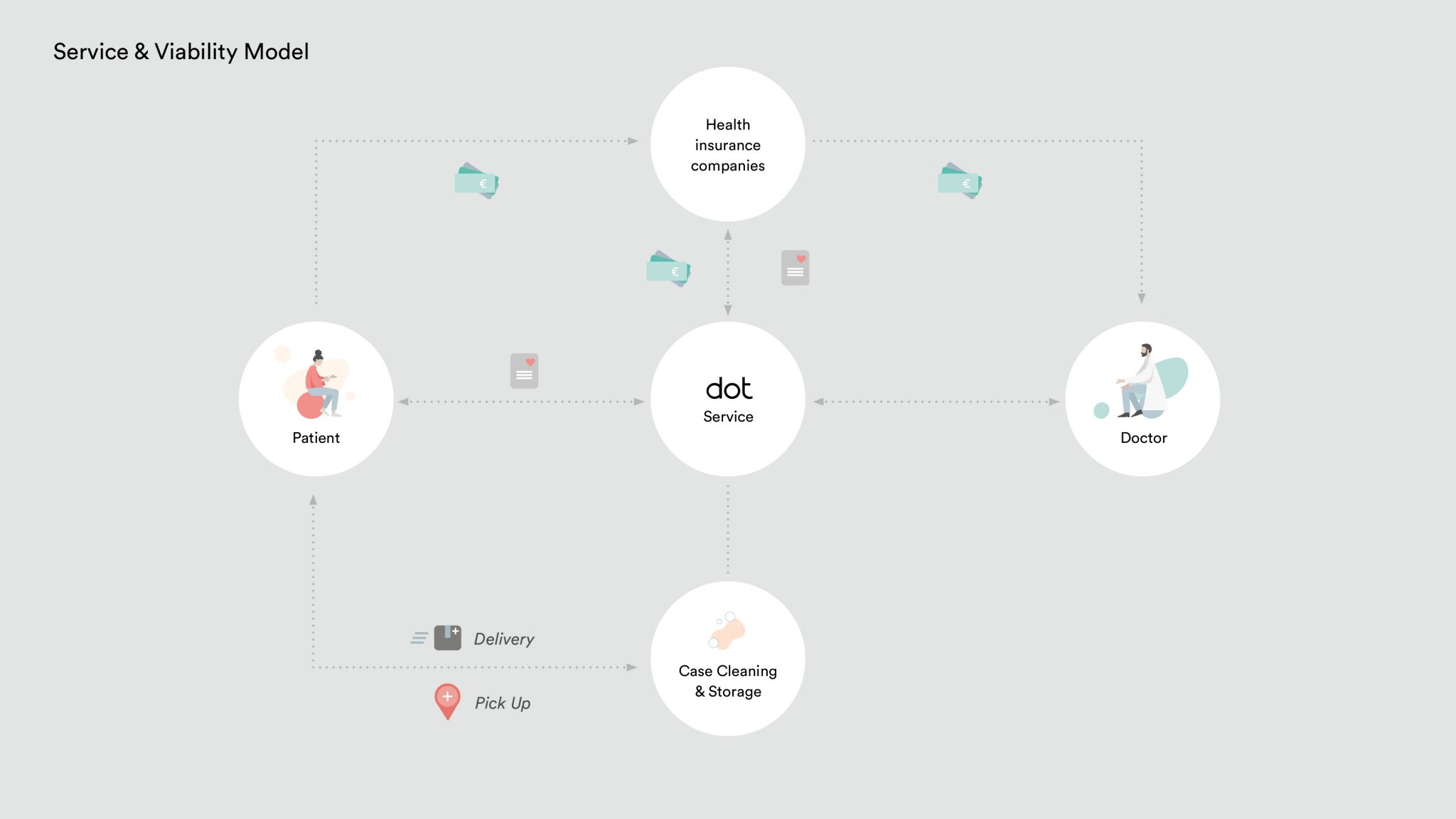„dot is a holistic concept that clearly offers a novel approach to receive a preliminary medical diagnosis with very little effort. Based on data generated by the user, the time available to a doctor could be balanced out and reorganized in a new, more beneficial and effective way. Yet Dot looks beyond efficient treatment and automated documentation only. In a comprehensive way, this concept could create more space for patient empathy and lead to a human-oriented health system.“
– Johannes Geyer (UXDA Jury Member and Head of Design Laundry Care, Global Brand Siemens, B/S/H)

00
Challenge
According to a Forsa survey by Techniker Krankenkasse, about 4 out of 10 cases in German emergency rooms turn out not to be acute. Uncertainty and misjudgements in dealing with one‘s own symptoms, as well as „googling“ them, are frequent causes for the decision to go to an emergency room. In addition, many affected people shy away from long waiting times and far distances to doctors. In particular for elderly people with limited mobility, going to the doctor can be difficult. Especially in this target group there is an urgent need for fast and personal medical care.
01
Empathize
In the course of our research we spoke with several potential users as well as medical experts. Among them were a care service manager and a chief doctor of a hospital. In order to structure the complex contents of our research we identified several key findings for patients and doctors. For example a lack of insights into the health reports of each patient, long waiting times for medical appointments or a more difficult access to health care in rural areas and for elderly people.


02
Define
How might we provide a fast and precise medical diagnosis for older and chronically ill people in their own homes ?
We applied a variety of methods to define our aim – especially from the field of design thinking and strategic management. In this way we were able to cluster the wicked problems, identify the interconnectedness of things and gradually gain clarity about the actual problems.
03
Ideate
During the ideation phase, a very divergent approach was taken in order to generate as many ideas as possible. In addition to a general product research, we conducted several sketching session to approach the final proposal. The aim was to create a product that was both easy to use and aesthetically pleasing. Next to examining the feasibility and product design, we focused on the development of a user-centered service and a viable business model.

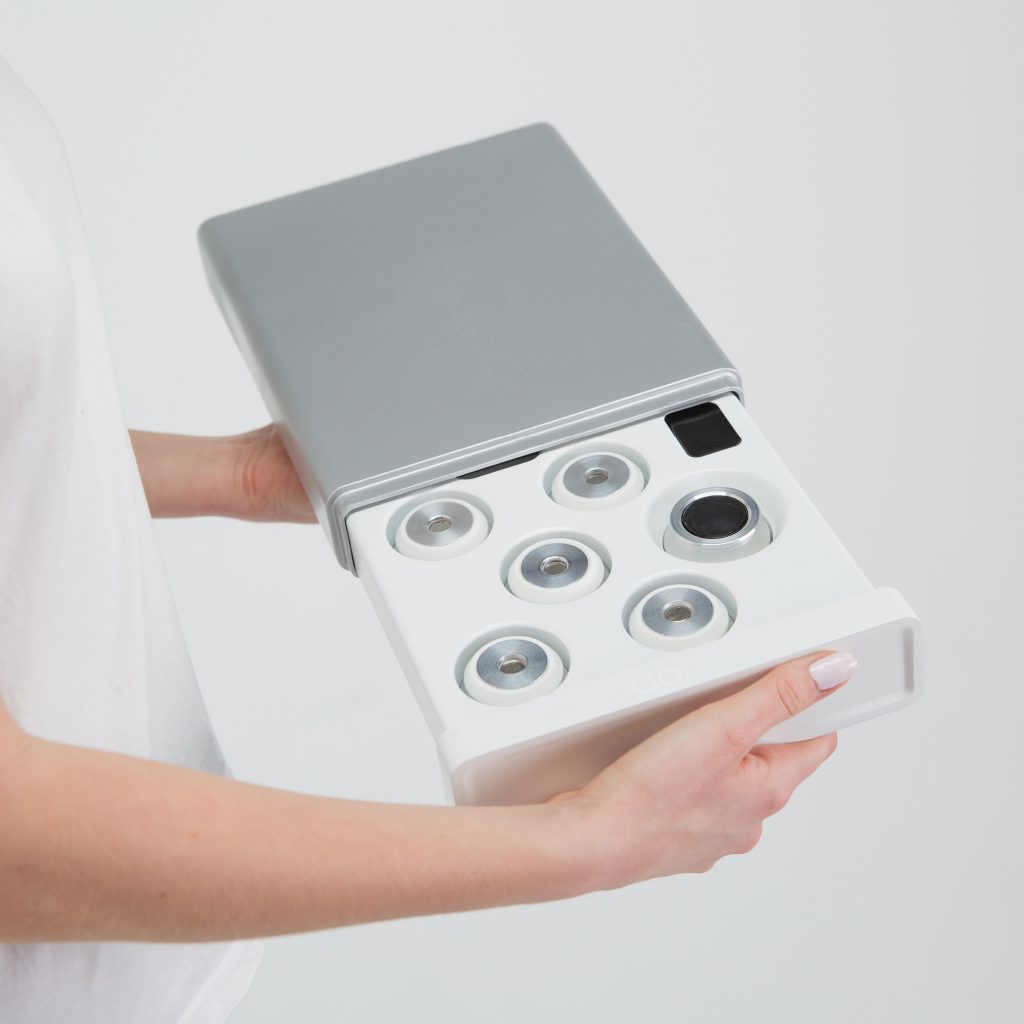
04
Prototype
After developing the first foam prototypes we validated our steps continuously with doctors and patients to create a product-service-system which takes both parties into account. The foam mockups were iteratively tested to ensure comfortable and easy handling. Same was done with the case. Since we structured our project into phases our first partner would be a doctor who is partly responsible to train our algorithm by using single dots to examine the patients
05
Test
It was possible for us to conduct a user testing in the UX laboratory of Fraunhofer IAO in Stuttgart. Here we tested our final prototypes and our service for its user experience and general usability with different test persons. The feedback we received was positive altogether. Moreover we conducted over 15 user interviews at an earlier stage to find out the needs and desires for an AI home diagnosis system. This allowed us to verify our assumptions and further improve our product.
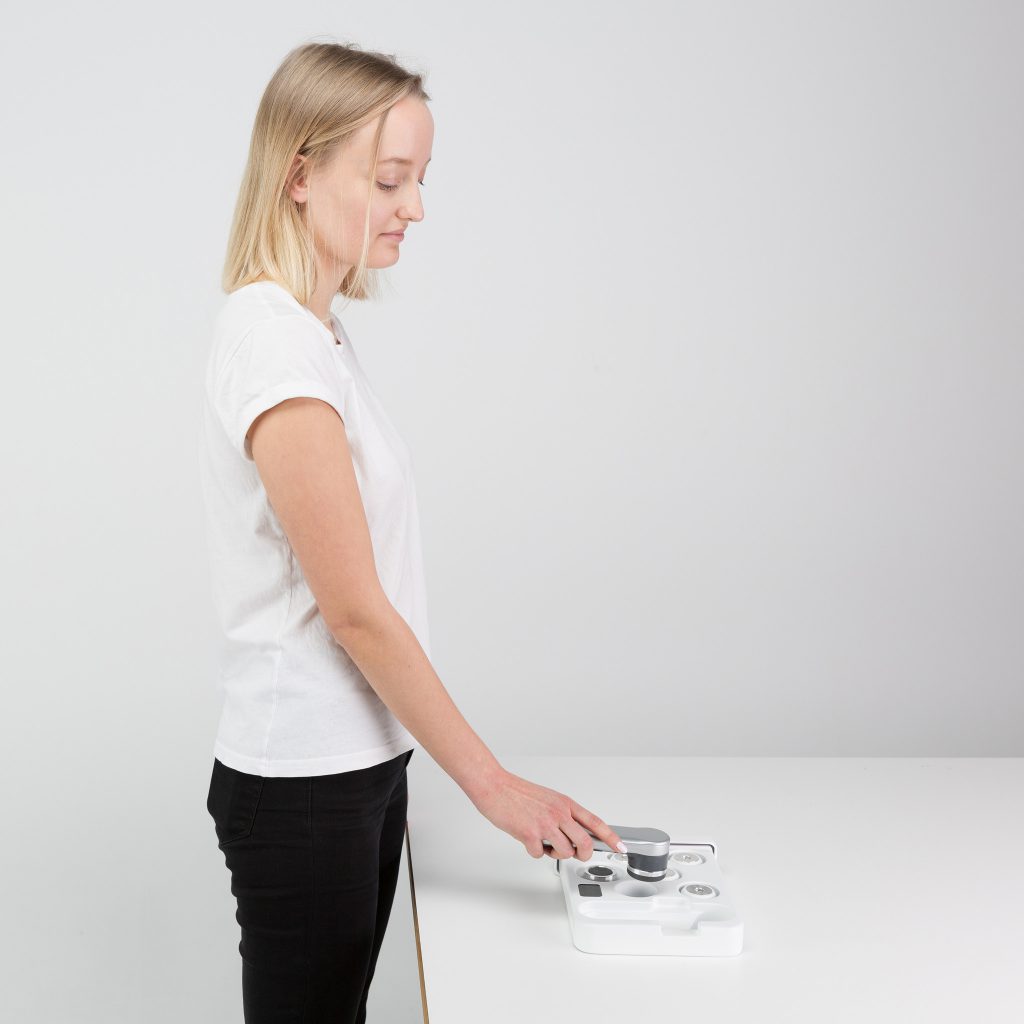
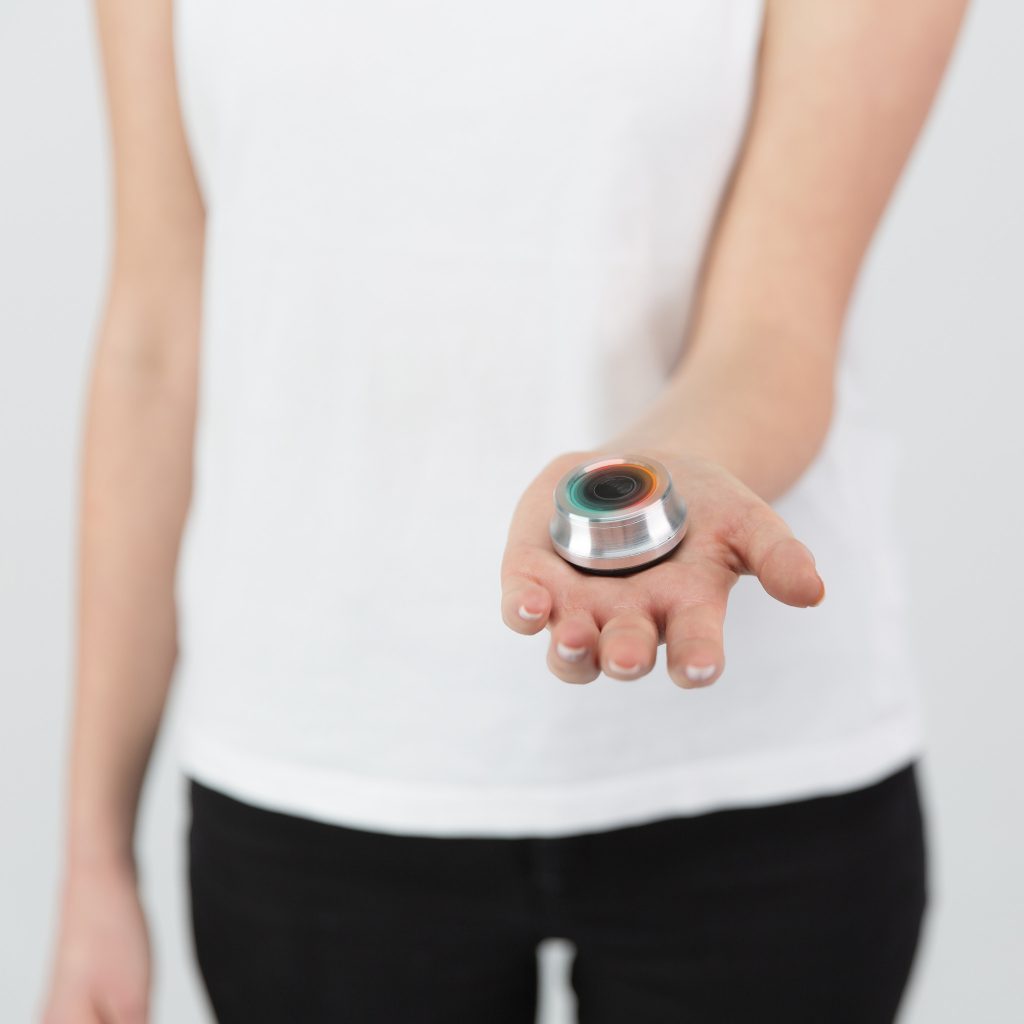
06
Implement
With dot doctor’s practices and emergency rooms are relieved. Through the interaction of human experience, artificial intelligence and mobile technology, dot enables the patient to get a precise diagnosis with personal medical care. Anytime and anywhere.
The service consists of an online platform, an interface for communication and the artificial intelligence „Liv“ the dot-case. It contains various examination sensors, a dot for user-AI interaction and a handheld. Guided by Liv, the patient can describe his symptoms and identify the necessary measured values by using the handheld device. The interpretation of the data is done by Liv, whereby the final diagnosis must always be approved by a doctor. Moreover we developed a financial model to proof the viability.
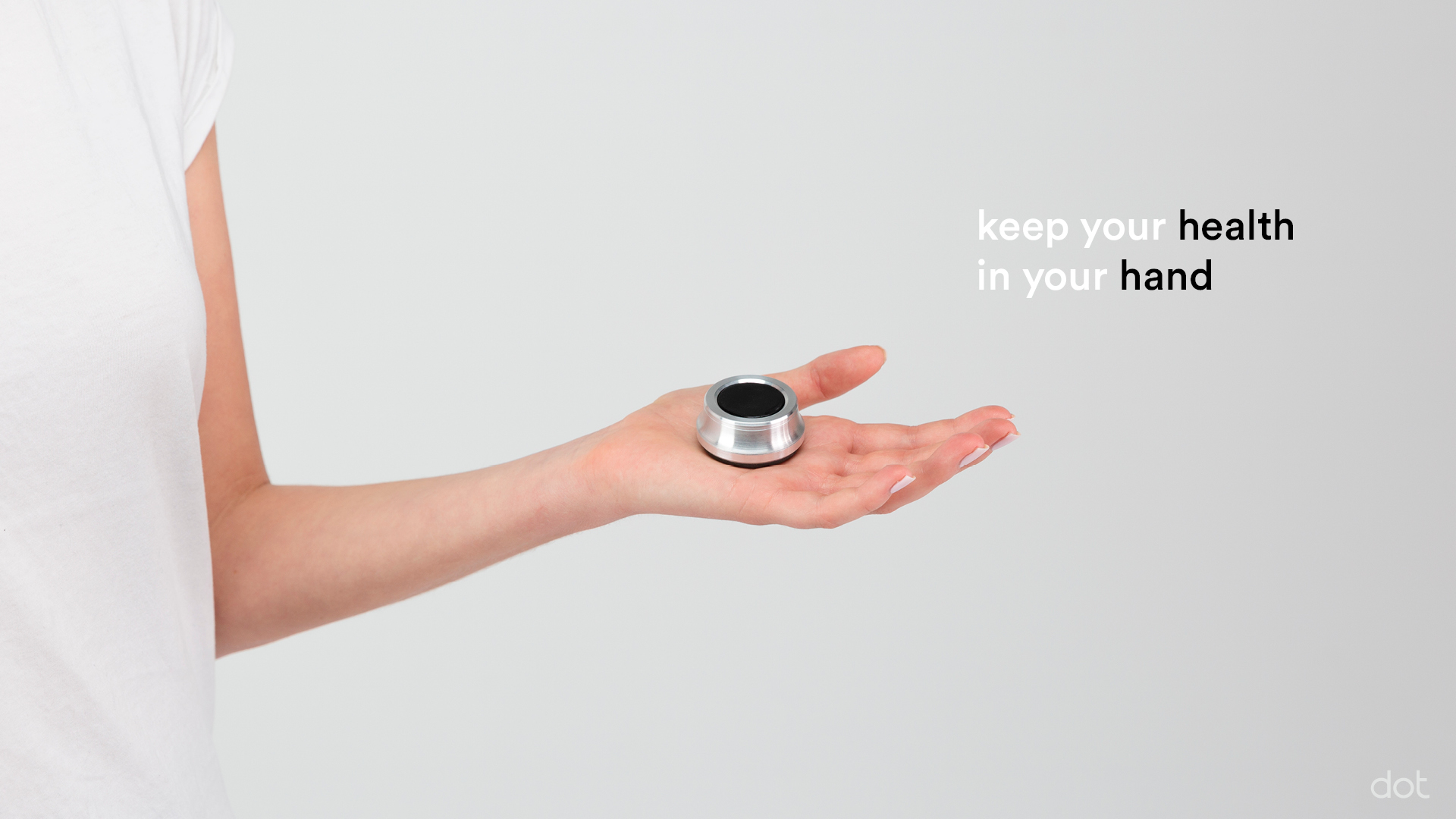
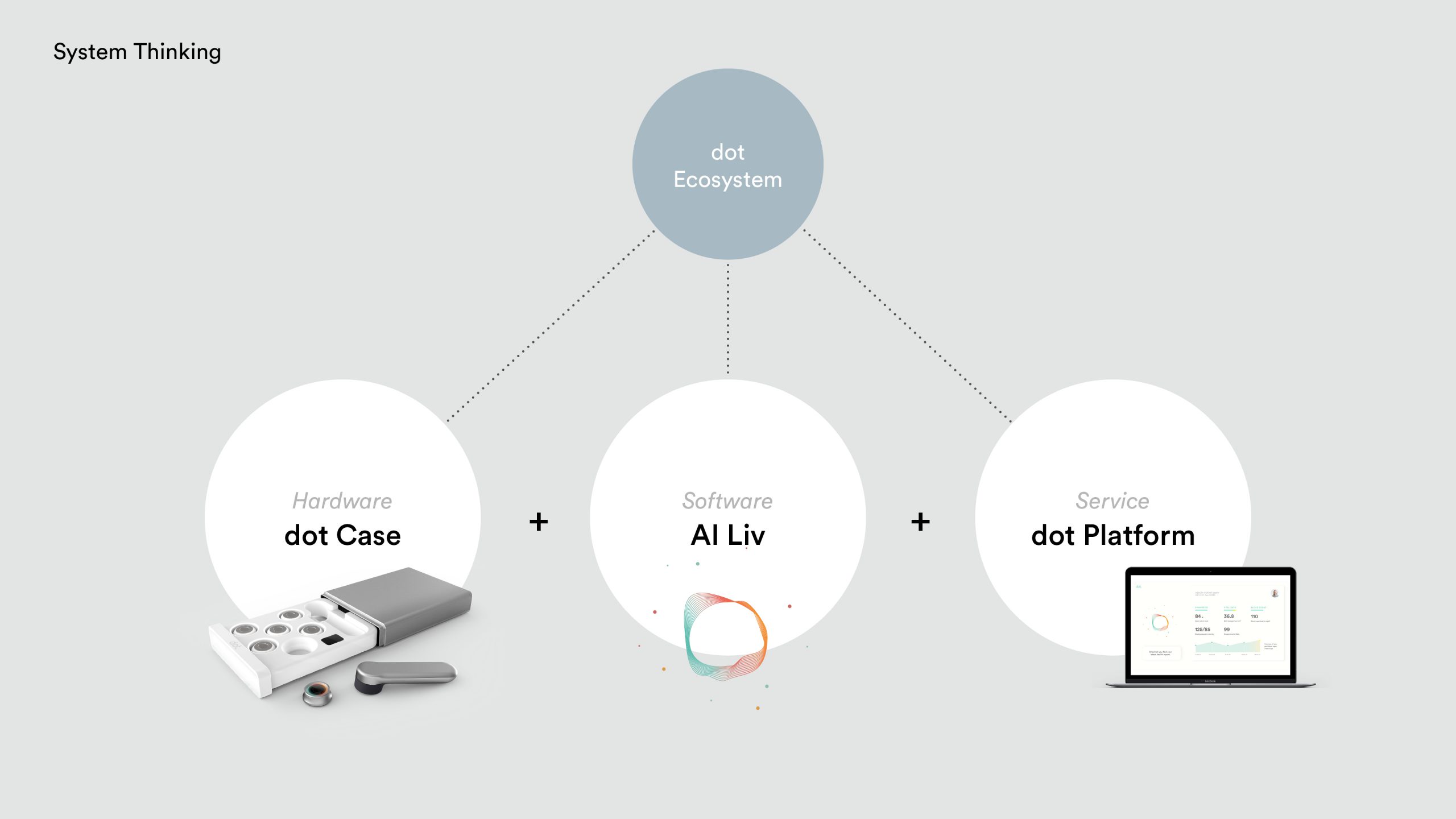
dot Case

The AI Liv
Liv works with advanced Natural Language Processing. Because of this, the conversation is more natural and Liv makes the patient feel less alone or isolated during his/her course of disease.
Through the collaboration of AI and human experience the final diagnosis is prepared. The system is then being updated with the newly input data and made available to all cases worldwide. Since the system is globally connected, dot learns fast and develops into a comprehensive health knowledge database. When reaching a high confidence level in diagnosing our system can work independently without the expert validation.
dot Platform
Possible Fields of Application

With dot, regular check-ups for prevention and early detection of diseases are possible.
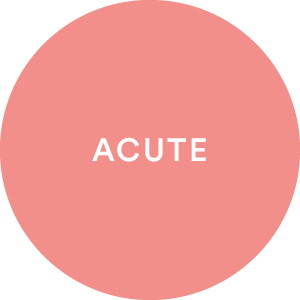
In case of acute complaints or symptoms the patient will receive a faster access to medical care and emergency rooms.

Chronically ill people can use dot to monitor their course of disease over a longer period of time.
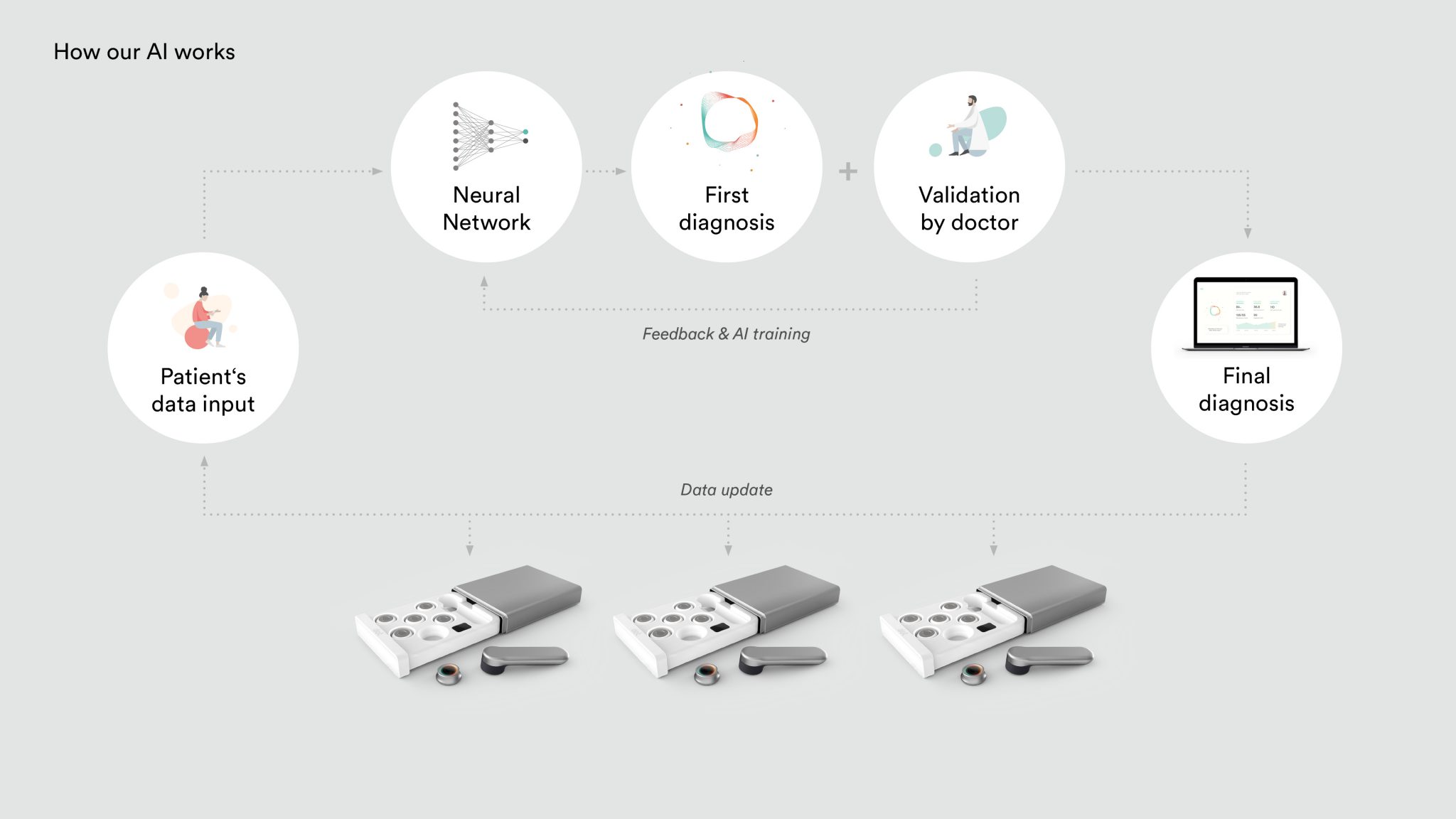
The Service in Detail

Delivery
We focus on collaborative use. The dot case will be delivered to the patients home within half an hour and returned after use. Thus, resources are used more effectively.

Pharmacies
In addition to a delivery, the cases can also be picked up at cooperating pharmacies. Since many older people prefer this option. The staff is on site as a contact person if help is needed.

Doctors
We work together with general practitioners and specialists from all medical fields. They use our system to monitor the process of therapy and chronic diseases.

Cleaning
After successful use the case will be returned. We take responsibility for the maintenance, storage and sterile cleaning of the case with the highest standards of hygiene.

Funding
We cooperate with health insurance companies in order to obtain a sustainable business model. They benefit from our service and subsidize a part of the costs for the customer.
Team Members
Andreas Kissling
Miriam Brüne
Thomas Memel
Nagihan Avcu
Andreas Hutter
Project Info
Wintersemester 2018/2019
Strategic Design
Prof. Dr. Susanne Schade
Prof. Gabriele N. Reichert
Prof. Günter Biste
Thomas Schönweitz
Awards & Nominations
iF Design Talent Award
iF World Design Guide
UX Design Awards | New Talent
International Design Center Berlin
Innovationspreis Ostwürttemberg
Awarded | Kreissparkasse Ostalb & WIRO
Student Design Awards
Finalist | Royal Society for the Encouragement of Arts, Manufactures and Commerce London
Future Award
Finalist | DVPT e.V.
Digital Future Competition
National Winner | German Federal Ministry of Education and Research
Exhibitions & Talks
10 | 2019
Smart City Talk + Exhibition
Aalen
09 | 2019
MAKE Fair Ostwürttemberg
powered by BOSCH
Schwäbisch Gmünd
05 | 2019
Sovereign towards a digital future Federal Ministry of Education and Research Congress Center Bonn
04 | 2019
Artificial Intelligence –
Impulses for creatives
Start Up Accelerator Aalen
